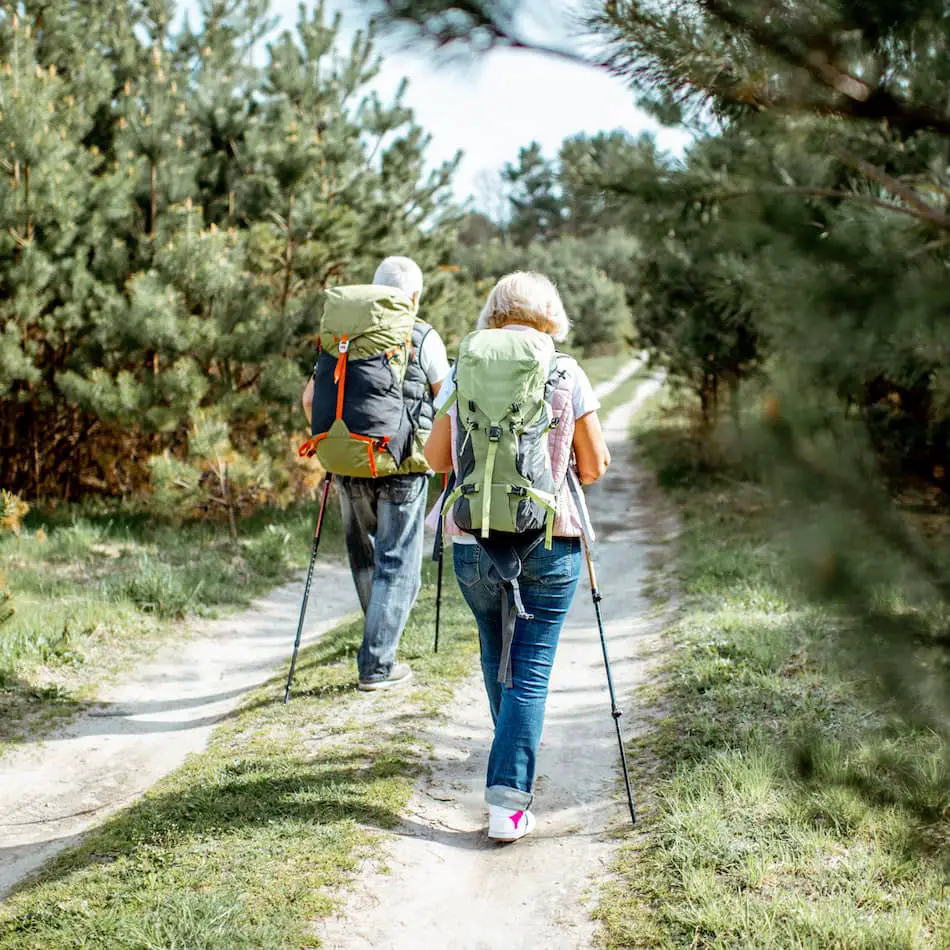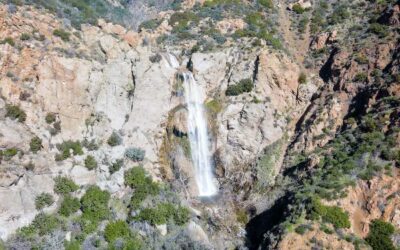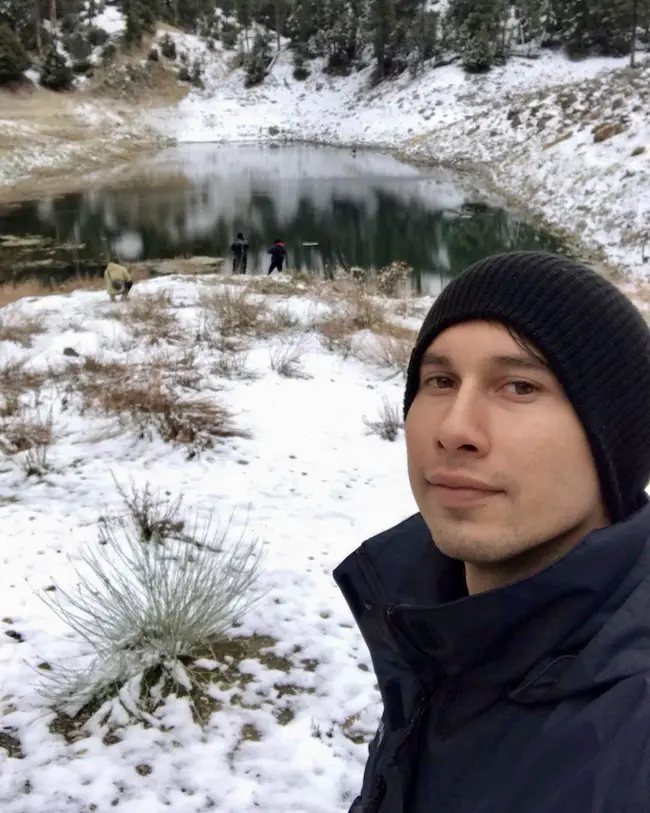Hiking is fantastic for physical and mental wellbeing, and it’s an activity any age group can enjoy. Seniors can get just as much satisfaction from hiking as younger people – it just takes a little more pre-planning. I’m here to help you along your hiking journey.
Seniors should check with their doctor before starting hiking and consider going out with a friend or in groups. Carefully researching the route beforehand is also essential, and bringing trekking poles will make it easier to navigate challenging terrain.
Top 13 Hiking Tips for Seniors and Older Adults
1) Check-in With Your Doctor First

Let your doctor know before you start hitting the trails. You may think it’s unnecessary and that you’re in tip-top condition, but it doesn’t hurt to get a clean bill of health. Your doctor will most likely support you in taking up a new physical activity. They may even have some helpful information to share.
If you have a pre-existing condition, your doctor will want to know before you start a demanding new physical activity. They may have advice on just how much your body can handle and help you understand your limits.
Perhaps you take medication that doesn’t usually pose any problems but may cause side effects if you’re under strain or sunlight. You don’t want to start feeling nauseous or dizzy when out on a hike. Hiking at altitude could exacerbate these issues.
2) Research Beforehand

An unplanned hike is all very well until it turns out to be much longer or tougher than anticipated. Thankfully, there are some great resources nowadays to help you map out your hikes.
My personal favorite is the AllTrails app. With the free version, you can discover all the awesome trails in your area and find out just how suitable and difficult they all are. It provides the length of the trail and reviews of the hike so you better understand the recent conditions.
AllTrails can also be used to map out customized routes and to keep a record of any hikes you’ve completed.
3) Bring a Light Sweater or Jacket
Hiking may get the body moving and the blood flowing, but you might still get a little chilly!
When out and about in any other season than summer, pack a light-weighted sweater or jacket so you don’t get caught cold mid-hike. Even in the summer months, packing a jacket is a sensible precaution for seniors when hiking at high altitudes.
Light clothing is important for multiple reasons. Firstly, bulky clothing will just weigh you down and make you overheat. Secondly, you have limited space in your bag and should aim to keep things as condensed as possible.
Lugging a big old sweater around will weigh you down, and take up vital space that could be filled by other items.
4) Pack an Emergency Kit
Hopefully, you won’t need it, but packing an emergency kit is like taking out personal insurance. Seniors need to be extra cautious with their bodies. If you do take a fall in the middle of nowhere, you’ll be grateful you brought some first aid.
Let’s go over what a good emergency kit should contain:
- Adhesive tapes
- Antiseptic wipes
- Bandages
- Elastic bandages
- Emergency blanket
- Emergency contact information/medical information
- First aid manual
- Gauze roll and pads
- Gloves
- Instant cold pack
- Safety pins
- Scissors
- Thermometer
- Triangular bandage
- Tweezers
That’s a lot of stuff! But it all fits into a neat and compact box, and most emergency kits weigh around 1lb or less.
5) Use Trekking Poles for Stability and Support
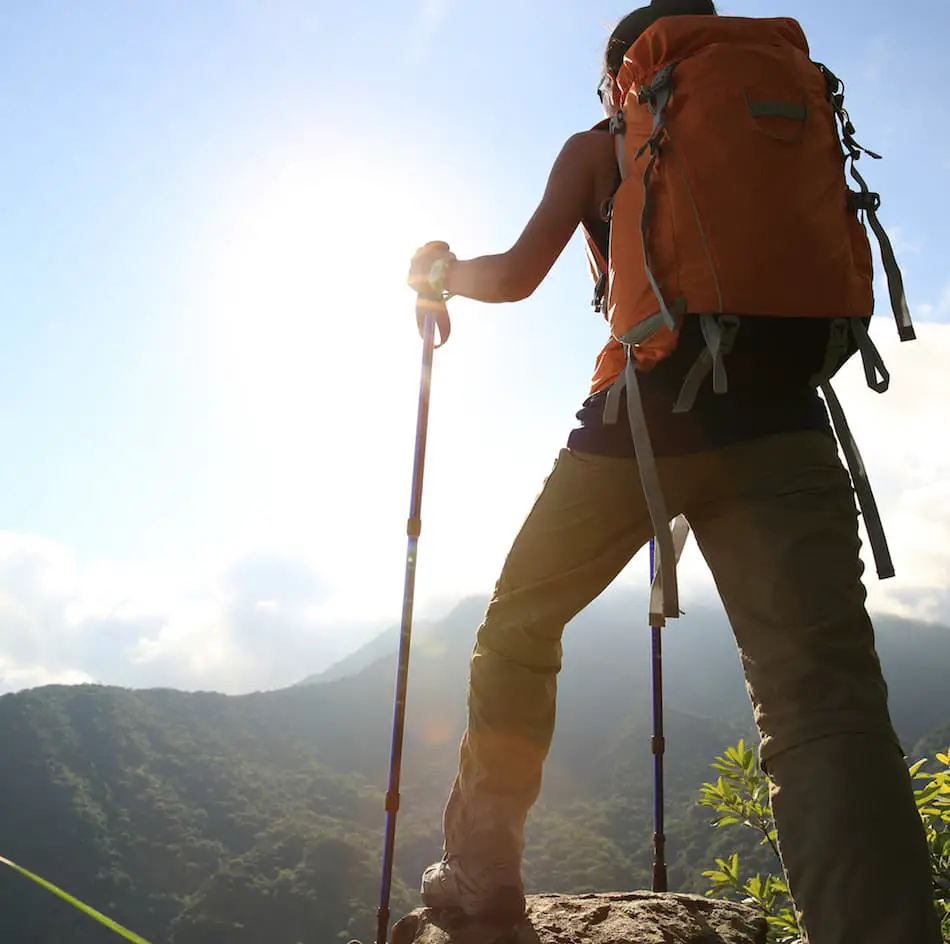
Trekking poles are a senior hiker’s best friend. What would once have been awkward terrain becomes much more navigable with the assistance of these stabilizing and supportive poles.
Trekking poles are excellent when going downhill and even uphill, helping you balance your weight evenly and taking pressure off your knees. If you suffer from joint pain, trekking poles are a must-have.
You can also use trekking poles to brush away shrubbery and plants blocking your path, to check how deep puddles are, and to probe for quicksand. They also offer protection against any unfriendly wildlife you may encounter on your hikes.
I recommend TrailBuddy trekking poles, which you can buy check out here. These poles are lightweight and made from aluminum, which is stronger than carbon fiber.
6) Wear Comfortable and Grippy Hiking Shoes
Comfortable shoes are vital whether you suffer from foot pain or not. Hiking for long distances takes its toll on your feet and will leave them battered, bruised, and blistered if you don’t wear comfortable and supportive shoes.
Good hiking shoes will provide ample support to your ankles and feet, eliminating the risk of a twisted ankle while traveling through tricky terrain.
Grippy shoes are vital and give you permission to hike with confidence over all surfaces. Good hiking shoes have deep traction on the soles, and hiking-specific grooves and patterns. These specialized tread designs play a vital role when hiking on wet ground or snow.
If you can’t afford to invest in a new pair of shoes right now, you could modify some existing shoes to make them more hiking-friendly. Scoring the bottoms and scuffing the soles will help reduce slippiness. These adjustments will bail you out of a jam, but don’t treat them as a long-term fix.
7) Wear Loose-Fitting and Breathable Hiking Pants
Prevent chafing and make your hikes more comfortable by wearing loose-fitting and breathable pants. Loose-fitting pants shouldn’t feel overly baggy, but they should allow you to move freely. The importance of wearing suitable hiking pants is often underestimated, but without them, you’ll quickly start overheating and sweating.
Seniors should weigh up the benefits of standard and convertible hiking pants. Standard pants are much like regular pants and will keep you warm when hiking in colder climates. Convertible pants can be turned into shorts for extra breathability.
Standard pants work great if you mostly hike in cool temperatures. But if you like to get out in all weathers, you may prefer the versatility of convertible hiking pants.
8) Wear Hiking Socks for Support, Comfort, and Moisture Control
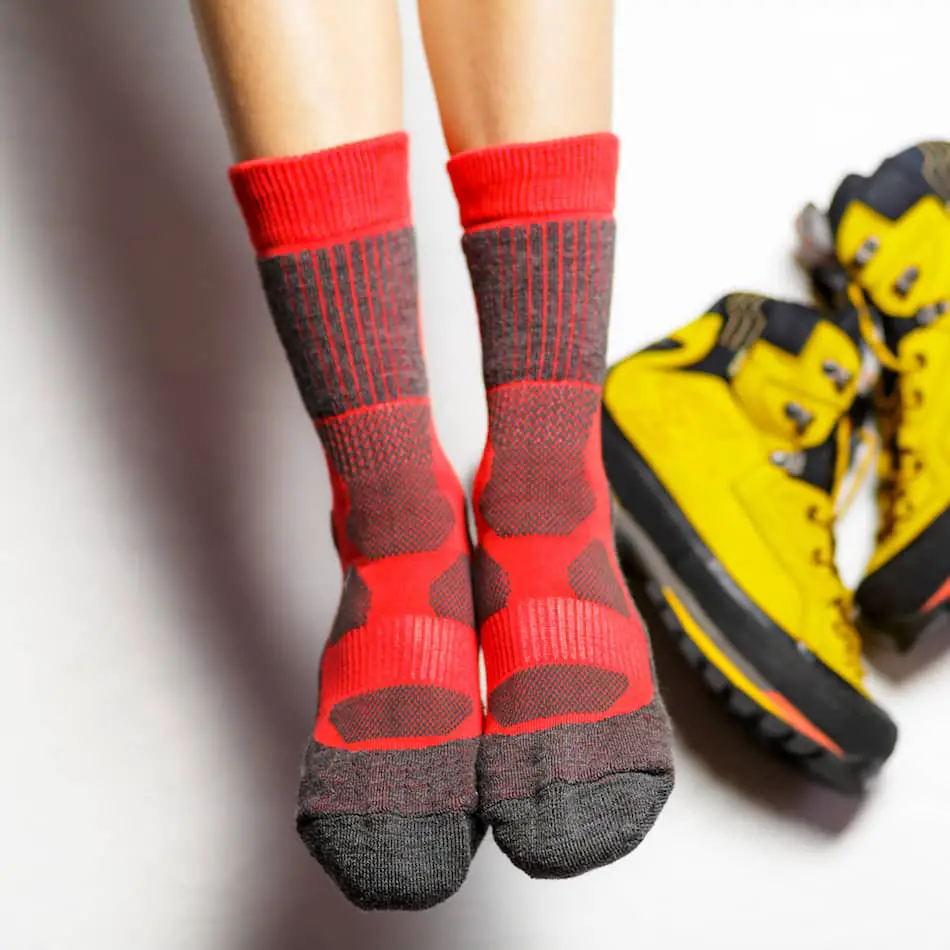
Seniors should always wear hiking socks. Regular socks simply do not offer the level of support and comfort you need for long hikes, nor can they cope with moisture. Wearing the wrong socks makes hiking more difficult and leaves you liable to blisters.
In contrast, thick, high-quality hiking socks provide ample cushioning for your feet – and they are very durable! Remember that hiking isn’t like regular walking. When navigating hilly, rocky terrain, you’ll appreciate the extra comfort hiking socks offer. In the winter months, you’ll be grateful for the extra warmth, too!
Hiking socks also keep your feet dry, reducing the risk of blisters. As your feet perspire, the socks will suck up all the moisture, keeping your feet bone dry. Standard, thin socks can’t keep up with the perspiration, and the inevitable rubbing at the back of your feet will cause blisters.
9) Bring Headlamps for Evening Hikes

Evening hikes require more awareness than daytime walks. Bringing headlamps will help you spot any obstacles blocking your path, and alert you to any potential danger.
Headlamps are preferable to flashlights for seniors. If you’re using trekking poles, you need to keep both hands free for stability and support. A firmly fixed headlamp will light up the night, and allow you to stay fully focussed on the route ahead.
Good headlamps should weigh no more than 2oz, have a minimum 30-lumen brightness, and have a battery life of 40 hours or more. Your chosen headlamp should also be waterproof and have at least a 10-meter beam.
10) Tell a Family Member, Friend, or Neighbor Where You Plan to Hike

Seniors should always let somebody know where they are going before setting off on a hike. Hopefully, all of your hikes will be drama-free. But if you get into trouble, a family member, friend, or neighbor knowing where you are will act as a safety net.
Informing somebody where you’re hiking is even more important if hiking alone. Let them know what trail you’re going on, what time you are setting off, and what time you plan on getting back. If you’ve driven to the starting point, tell them where you’ve parked your car.
In a nutshell, find somebody you can trust and brief them with the key details about your hike.
11) Bring an Emergency Rescue Whistle
An emergency rescue whistle is a great item to have on you – it could even save your life. These are much louder than regular whistles or the sound of your voice. If you get into difficulty, your best chance of alerting someone is with an emergency rescue whistle.
Amazon stocks several emergency rescue whistles suitable for hiking – good whistles reach over 120 decibels and can be heard from a mile away. Make sure you buy a durable and water-proof whistle.
12) Hike with a Partner or in a Group
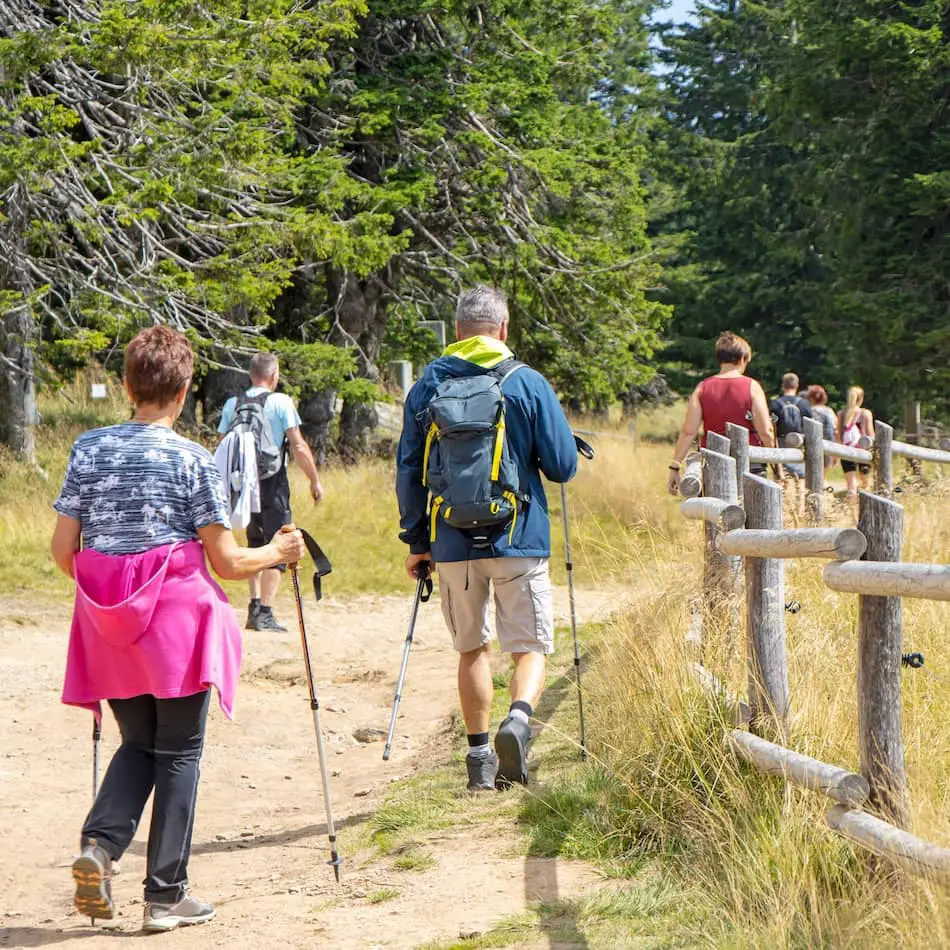
For seniors, hiking with a partner or in a group might be a better option than going solo – even more so if you’re new to hiking. Going with others is often more fun, it’s safer, you get to meet like-minded people, and you can pick up new tips.
Joining a hiking group will put you in contact with more experienced hikers, who will keep you safe. You’re less likely to get into danger or have an accident when hiking with a partner or in groups.
Hiking with a partner or in a group may also be cheaper. If there are no hiking spots in your area, you’ll have travel costs to pay, and you might have to shell out for a hotel. Hiking with others keeps these costs as low as possible.
13) Stay Active Daily (For Stamina and Preparation)
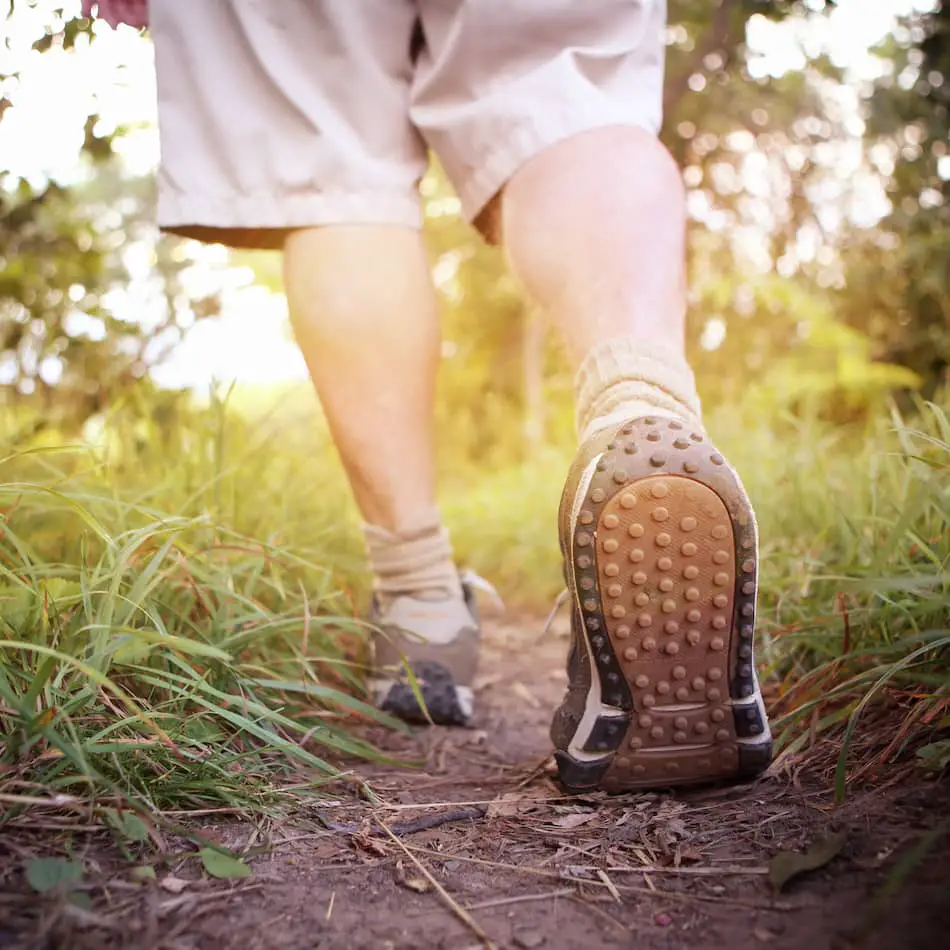
Keeping active on a daily basis will pay dividends for seniors when hiking. You don’t need to hit the gym, but regular walking and cardio exercises will help build up your stamina and stay in an active frame of mind.
Going on a big hike after weeks or months of lounging around could be a daunting prospect and will be tougher on your body. Staying active builds heart strength and keeps your joints in good condition. You’ll also feel fresher and more motivated.
If you suffer from joint pain, low-impact exercises are best for easing discomfort and keeping healthy. Try upping your daily step count (10,000 is a great target) or taking up cycling or swimming in your spare time.

